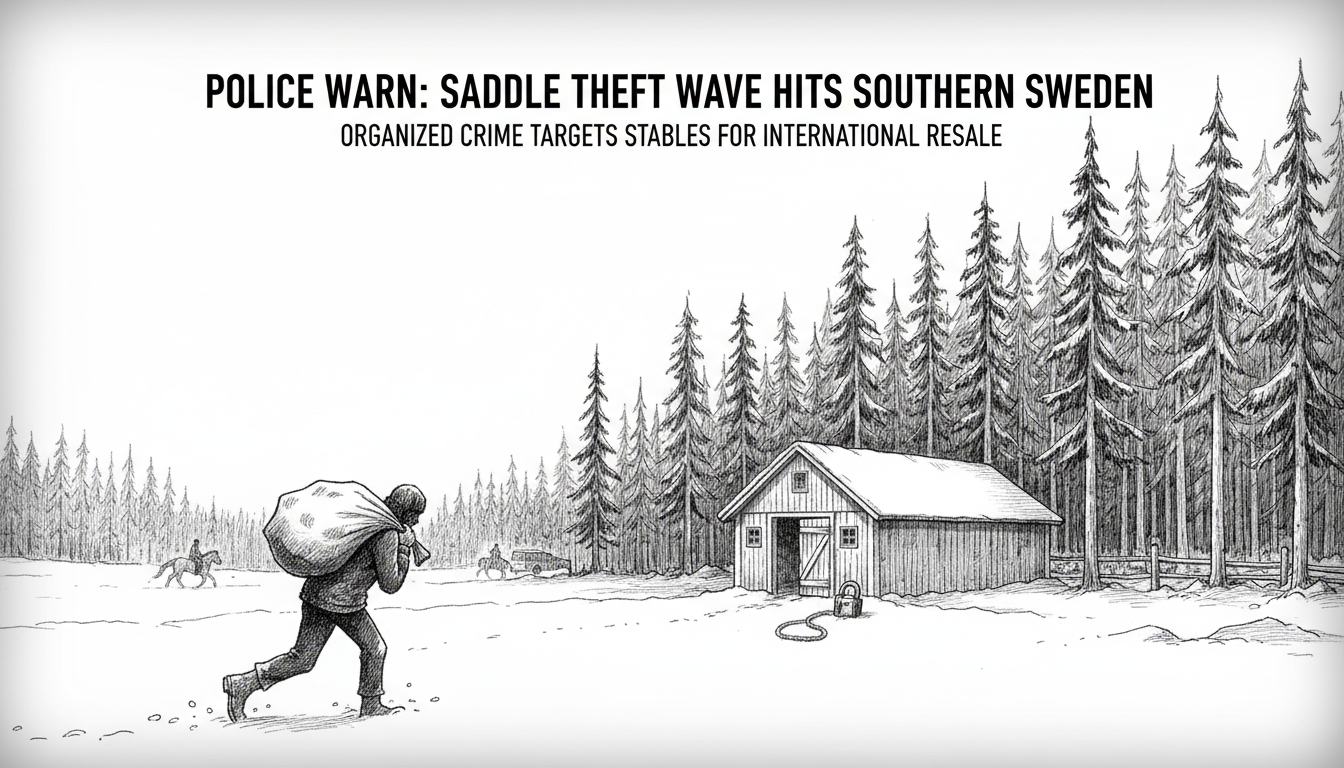A new wave of saddle thefts is sweeping across southern Sweden, with police reporting more than 20 stables targeted in recent weeks. The thefts have left horse owners and stable managers on high alert as valuable equipment disappears overnight.
Martina Gradian, a police spokesperson in the region, confirmed the concerning trend. "The stolen items can quickly add up to substantial amounts," she said in a statement. "We're seeing organized theft patterns that suggest professional criminals are behind these operations."
Saddles and other equestrian equipment often carry price tags reaching thousands of kronor each. This creates a situation where significant value concentrates in small spaces like saddle rooms, making them attractive targets for thieves. One stable in Tenhult, southeast of Jönköping, became the latest victim when burglars broke into their saddle room overnight and stole five saddles along with several riding helmets.
This marks the fourth similar theft in the county within a short timeframe. Police reports indicate similar crimes have occurred at multiple locations across southern Sweden recently. Until last week, authorities documented at least twenty cases spanning several regions.
"We received these numbers last week showing up to twenty cases in our region alone," Gradian explained. "But we're also seeing similar patterns in Bergslagen and other central regions."
Police investigators are examining potential connections between the thefts but remain cautious about drawing conclusions. "We're looking at whether we can link these different cases together," Gradian noted. "What we know they share in common is the theft of saddles and stable equipment that can be resold on secondary markets, often internationally."
This isn't the first time Sweden has experienced concentrated stable thefts. Police note these crimes typically occur in clusters, prompting them to issue formal warnings on their website. Several years ago, three men received multi-year prison sentences for stealing more than 80 saddles across Skåne, Värmland, and Västra Götaland counties.
These cases present particular challenges for law enforcement. "They're difficult crimes to investigate," Gradian acknowledged. "That's why it's crucial to make things as hard as possible for the thieves from the start."
The theft wave reflects broader patterns in property crime across Sweden, where organized groups target high-value, portable items with established resale markets. Equestrian equipment proves especially vulnerable due to its combination of high value, portability, and strong international demand.
Police recommend several preventive measures for stable owners. Installing alarm systems in saddle rooms provides the first line of defense. High-quality locks offer essential protection, and authorities suggest securing even utility carts that thieves might use to transport stolen goods between stables and vehicles.
Specialized saddle locks that physically secure saddles to fixed objects provide another layer of security. Proper outdoor lighting and eliminating visual obstructions like overgrown vegetation around doors also deter potential thieves.
Vigilance remains key. Stable operators should monitor for unfamiliar people or vehicles in their areas. For recovery purposes, photographing saddles and recording serial numbers helps identification later. DNA marking systems offer additional tracking capability.
The concentration of thefts in southern Sweden follows established criminal patterns where thieves target regions with dense equestrian communities. The area's proximity to international transport routes may facilitate quick movement of stolen goods across borders.
Sweden's equestrian community now faces the dual challenge of protecting valuable equipment while maintaining normal operations. The psychological impact extends beyond financial loss, creating security concerns that affect daily routines and community trust.
As police continue their investigations, stable owners across southern Sweden are reassessing their security measures. The theft wave serves as a stark reminder that even rural and semi-rural communities face organized criminal threats in today's interconnected world.

